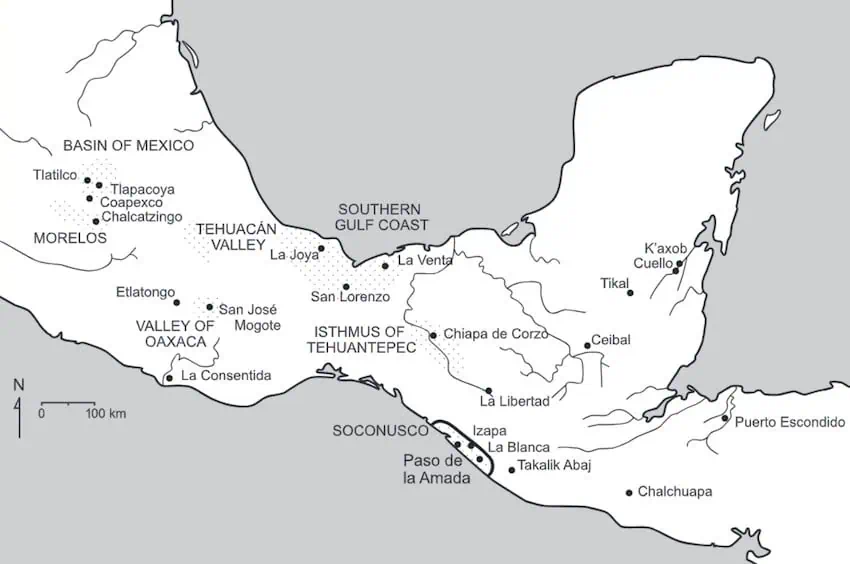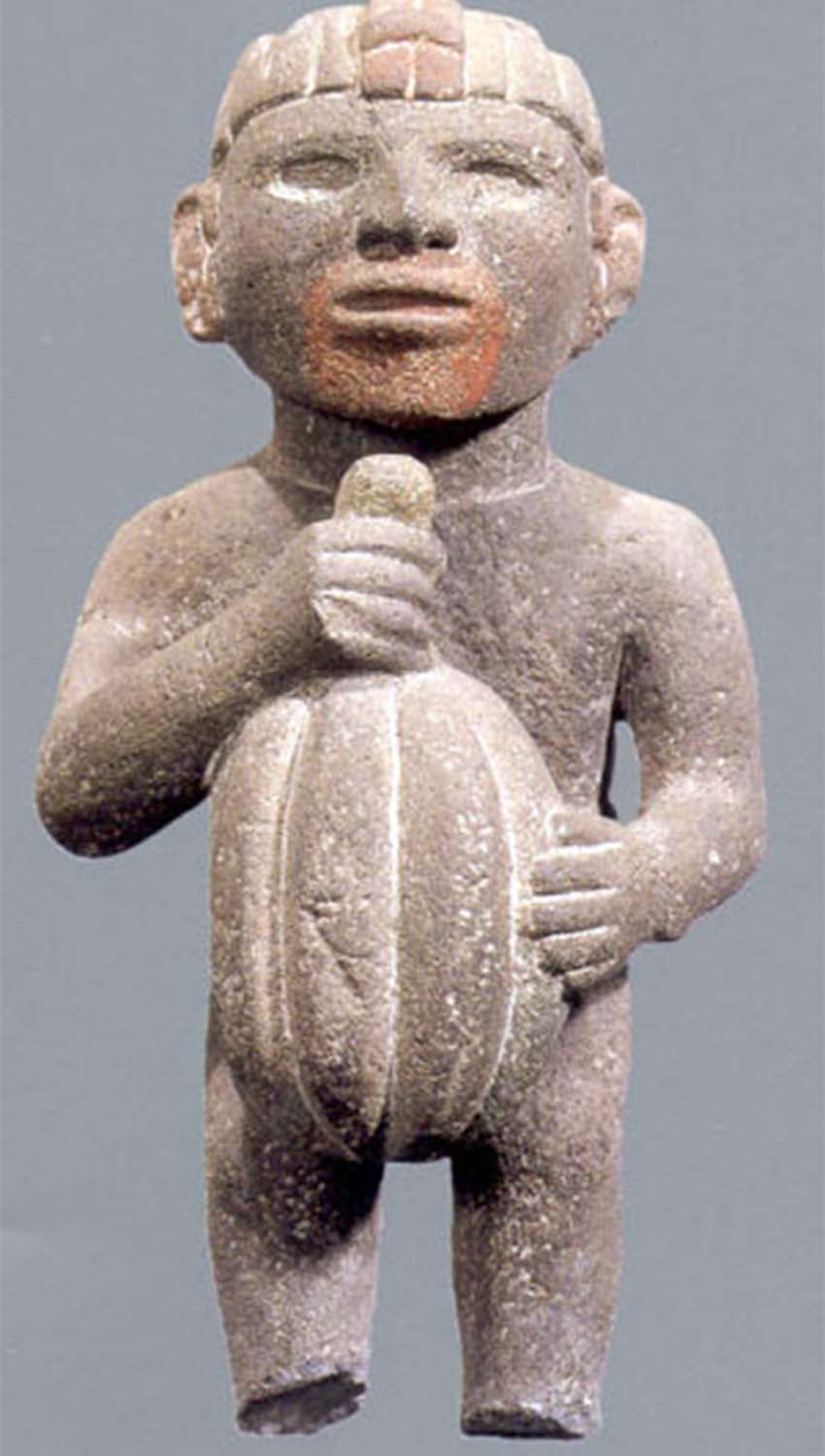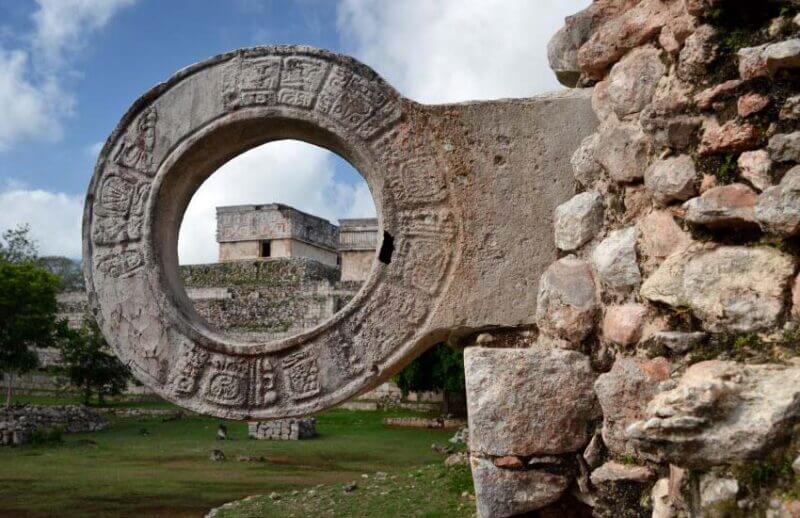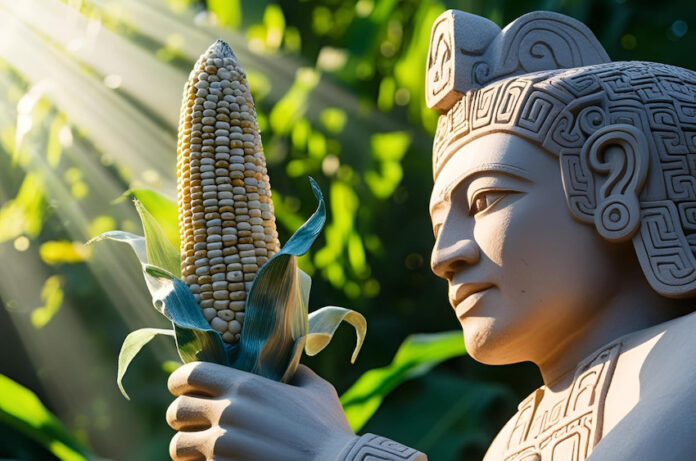Although the Mokaya are known as the “Corn People” — a sobriquet that is a literal translation of what Mokaya means in an early form of Mixe-Zoquean language — these early Mesoamerican inhabitants from the Soconusco region of Chiapas weren’t the first to domesticate maize. However, they are credited with many other firsts. They were the first documented agricultural society in Mesoamerica, the first status-oriented rank society, the first people to make chocolate and ceramics and they built the first known Mesoamerican ballcourt.
If this sounds very much like the Olmecs, the so-called “mother culture of Mesoamerica,” it should be noted that archaeologists John E. Clark and Michael Blake published the first important study of the Mokaya (“El origen de la civilizacíon en Mesoamérica: Los olmecas y mokaya del Soconusco de Chiapas, México”) as recently as 1989. Thus, it took some people a while to realize that the Mokaya were not Olmecs, nor did they develop contemporaneously. The Mokaya predated them by several centuries.

However, the Mokaya people, creators of the first sedentary culture in Mesoamerica, were an important influence on both the Olmecs and the later Maya.
The first sedentary agricultural society in Mexico
Today, the area the Mokaya occupied in Soconusco is mostly farmland, which is appropriate since they were the first known sedentary people in Mexico and, for that matter, in Mesoamerica. The latter is an important distinction, since in this era before national borders, their lands extended from coastal Chiapas into Guatemala.
From 1900 B.C., the Mokaya, notably at their Paso de la Amada settlement, formed the foundation of agriculture in Mesoamerica. Although other peoples, like the Chantuto, preceded them in Soconusco, they were nomadic hunter-gatherers. The Mokaya, by contrast, took advantage of Soconusco’s fertile volcanic soils to plant maize, cassava and beans and cultivated avocado and Theobroma cacao (the main ingredient of ancient chocolate).
What made them take up agriculture before anyone else in Mesoamerica? We don’t know for sure that they were indeed the first, but no evidence exists for earlier groups having done so. Recent studies on this transition globally have shown that strong governance helped to pave the way for agriculture by regulating land use. Notably, this was also an area in which the Mokaya were pioneers.
The first complex rank society
The Mokaya were the first sedentary society in Mesoamerica and, perhaps not coincidentally, the first for which there were clear indications of rank and status. This is evident from their hierarchical settlements, which had the largest central houses reserved for their chiefs, who fulfilled shamanic duties and set up long-distance trade networks to acquire luxury goods, over which they exercised tight control. Obsidian, mica and iron pyrite were all highly sought-after trade items.
Chocolate was the ultimate luxury good. Cultivated by the Mokaya — and not obtained via trade — its consumption was restricted to elites. In this, the Mokaya set a template that would be followed by Indigenous groups in Mexico up to the time of the Mexica.

The inventors of chocolate
If you’re among the millions worldwide who now enjoy chocolate’s delicious flavor and mood-enhancing benefits, you owe a debt of gratitude to the Mokaya. They invented it, although it merits noting that the cacao preparations they enjoyed, formative as they were in the long history of chocolate, bear little resemblance to the delicacy of today.
For starters, the Mokaya, like later Indigenous peoples of Mesoamerica, didn’t eat their cacao-made specialties. They drank them. After roasting and grinding the seeds and extracting the mucilaginous pulp of Theobroma cacao, they added water and, on occasion, let the mix ferment. Yes, that’s right. The Mokaya’s chocolate was sometimes at least mildly alcoholic, a factor that may have had something to do with its ritual significance.
Other ingredients like chiles, vanilla and honey may have been added sometimes in these early chocolates, for which evidence exists as far back as 1900 BC, meaning this was an early but significant aspect of Mokaya culture. The evidence was found in pottery bowls called tecomates. Yes, the Mokayas were likely the first Mesoamerican culture to specialize in pottery too.
The better chocolate preparations, as noted, were reserved for those of higher status, like chieftains. However, coarser varieties in which cacao and corn dough were mixed were available to the rank and file.
The builders of the first Mesoamerican ballcourt

We don’t know what the population of Mokaya culture was at its peak, only that it was one of the largest societies of its time. The Mokaya’s largest community, at least until it disappeared around 1300 B.C., was Paso de la Amada, the site of high-status residences of the pole-and-thatch variety, and the oldest Mesoamerican ballcourt ever built.
According to a study published by archaeological excavators Clark, Blake, and Richard G. Lesure, the amount of labor required to construct it suggests it must have had political or religious significance. Why? Its enormous size (85 meters by 30 meters) made it the largest structure in Mesoamerica that we know of at that time. What’s really interesting, though, is its estimated completion date of 1650 B.C., which scuttles any remaining thought that the Olmecs invented the Mesoamerican ballgame — the Olmec culture emerged sometime from 1600 to 1500 B.C.
Etlatongo, in the Oaxacan highlands, is the site of the next oldest discovered ballcourt, dating to 1375 B.C. The Olmecs, Toltecas, Maya and Mexica would all adopt the Mesoamerican ballgame in later years, but the Mokaya played it first.
The first documented artists in Mesoamerica
Between the chiefs and the farmers, the middle tier in Mokaya society was filled by artisans and traders. The former pioneered the first pottery tradition in Mesoamerica during the Barra phase (1900–1700 B.C.) of Mokaya culture, turning out ceramics noted for their polish and sophistication. The technical skill of these early artists flowered even further during the subsequent Locona phase (1700–1500 B.C.), when potters produced a greater variety of vessels for a broader range of societal purposes. The earliest securely dated examples of pottery in Mesoamerica are from the Mokaya, circa 1550–1400 B.C.
Perhaps one day we’ll discover the Mokaya didn’t invent Mesoamerican agriculture, nonegalitarian society, chocolate, pottery and the traditional ballgame — it’s hard to anticipate new finds in antiquities — but the current evidence says they did, meaning that the “Corn People” established the foundational elements that would be hallmarks of Mesoamerican society forever after.
Chris Sands is the Cabo San Lucas local expert for the USA Today travel website 10 Best, writer of Fodor’s Los Cabos travel guidebook and a contributor to numerous websites and publications, including Tasting Table, Marriott Bonvoy Traveler, Forbes Travel Guide, Porthole Cruise, Cabo Living and Mexico News Daily. His specialty is travel-related content and lifestyle features focused on food, wine and golf.
